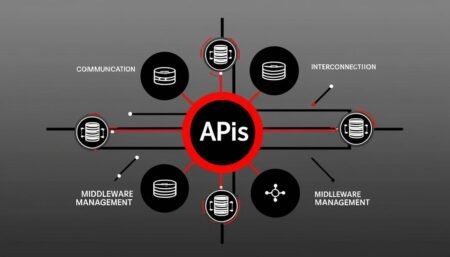As we look towards 2025, healthcare facilities are set for significant advancements driven by AI and innovative design strategies to tackle workforce shortages and improve patient access.
As the healthcare industry looks towards 2025, significant changes and advancements are anticipated in the design and operation of healthcare facilities. This evolution is largely driven by a combination of an impending workforce shortage, the need to address healthcare deserts, and the integration of advanced artificial intelligence (AI) technologies. According to an article on MedCity News, architects and healthcare providers will need to navigate these challenges by embracing sophisticated AI tools and employing innovative design strategies.
One critical concern is the projected shortage of healthcare workers, with estimates indicating a potential deficit of 100,000 workers by 2028. To counteract this pressing issue, healthcare facilities are increasingly utilising AI for operational efficiency. Presently, AI is already in use to predict staffing bottlenecks. However, there is substantial potential for the technology to enhance building designs and future infrastructural needs as emergent AI-assisted robotics start to play a more significant role in healthcare environments.
Specific innovations in design could include AI-enabled sensors capable of detecting falls in patients and autonomous robots entrusted with tasks such as cleaning or delivering items within healthcare premises. To accommodate these technologies, designers are rethinking the layouts of facilities, opting for a “backstage” approach that separates human movement from robotic activity.
The advent of smaller, multi-use healthcare facilities is another transformative trend. Currently, 80% of U.S. counties are classified as “healthcare deserts,” leading to a pressing need for more accessible primary care options. The article suggests that by establishing smaller clinics with core healthcare services dispersed across different communities, patient access could significantly improve. These facilities may be equipped to double as emergency care centres, offering critical services during emergencies such as strokes or cardiac events, where time is of the essence.
The design of these facilities will not only focus on patient access but also on the wellbeing of healthcare workers. With staff burnout being a key issue, changes are being made to enhance employee experience through better breakroom environments. These spaces are set to evolve from once being largely directed at physicians to encompass the needs of all staff members, including nurses and support personnel.
Additionally, the design trend of biophilia, which brings natural elements into healthcare settings, is gaining momentum. Evidence suggests that incorporating biophilic design—using natural materials and aesthetics—can reduce stress and enhance productivity among staff. The shift from stark, sterile environments to ones that are warmer and more inviting represents a growing recognition of the importance of employee wellbeing.
In summary, the upcoming changes in healthcare facility design are fundamentally centred around enhancing patient access and retaining staff, while also leveraging AI technologies. This multifaceted approach aims to create a future healthcare infrastructure that is adaptive, efficient, and responsive to the growing demands of both patients and healthcare professionals alike. The insights provided by Brett Paloutzian, healthcare business leader at HED, emphasise the importance of innovative planning to realise these potential advancements effectively.
Source: Noah Wire Services
- https://www.healthcarefacilitiestoday.com/posts/details.aspx?id=29944 – Corroborates the trends in healthcare facility design, including the emphasis on community spaces, flexible design, and the integration of AI for operational efficiency and future infrastructural needs.
- https://www.healthcatalyst.com/learn/insights/healthcare-worker-shortage-act-today-sustainable-future – Supports the projected shortage of healthcare workers, including the estimated deficit of 200,000-450,000 RNs by 2025 and the broader labor shortages in the healthcare industry.
- https://worldatwork.org/resources/publications/workspan-daily/u-s-healthcare-worker-shortage-predicted-to-reach-100k-by-2028 – Provides details on the projected shortage of 100,000 healthcare workers by 2028 and the factors contributing to this shortage, such as worker resignations and non-competitive compensation.
- https://www.healthcarefacilitiestoday.com/posts/details.aspx?id=29944 – Discusses the innovative design strategies, including the use of AI-enabled sensors and autonomous robots, and the ‘backstage’ approach to separate human and robotic activities.
- https://www.healthcarefacilitiestoday.com/posts/details.aspx?id=29944 – Highlights the importance of flexible design and the need for adaptable spaces to address the challenges posed by the pandemic and future healthcare needs.
- https://www.healthcarefacilitiestoday.com/posts/details.aspx?id=29944 – Explains the trend towards smaller, multi-use healthcare facilities to improve patient access, especially in ‘healthcare deserts’ where primary care options are limited.
- https://www.healthcarefacilitiestoday.com/posts/details.aspx?id=29944 – Emphasizes the focus on enhancing employee experience through better breakroom environments and the incorporation of biophilic design to reduce stress and enhance productivity among staff.
- https://www.healthcatalyst.com/learn/insights/healthcare-worker-shortage-act-today-sustainable-future – Supports the need to address staff burnout and improve employee wellbeing through design changes and better working environments.
- https://www.healthcarefacilitiestoday.com/posts/details.aspx?id=29944 – Discusses the role of AI in streamlining operations, predicting staffing bottlenecks, and enhancing building designs and future infrastructural needs.
- https://worldatwork.org/resources/publications/workspan-daily/u-s-healthcare-worker-shortage-predicted-to-reach-100k-by-2028 – Provides additional context on the workforce shortages and the need for innovative solutions to manage these challenges effectively.
- https://www.healthcarefacilitiestoday.com/posts/details.aspx?id=29944 – Highlights Brett Paloutzian’s insights on the importance of innovative planning and flexible design to address the evolving needs of healthcare facilities.
















